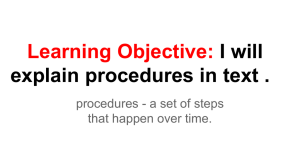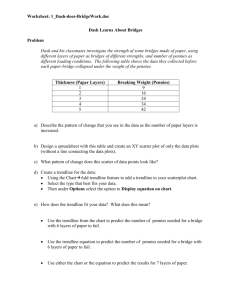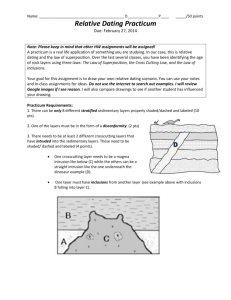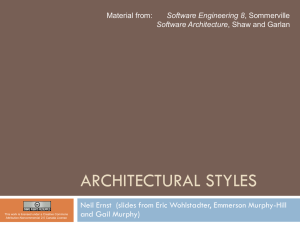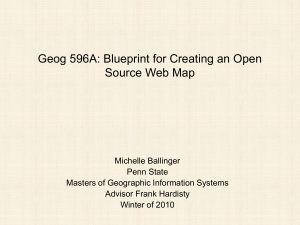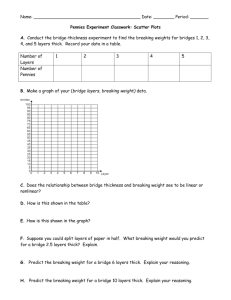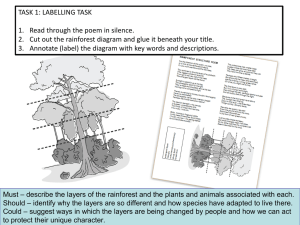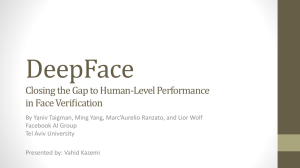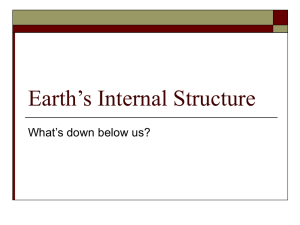Sedimentary Rocks Worksheet: Relative & Absolute Time
advertisement
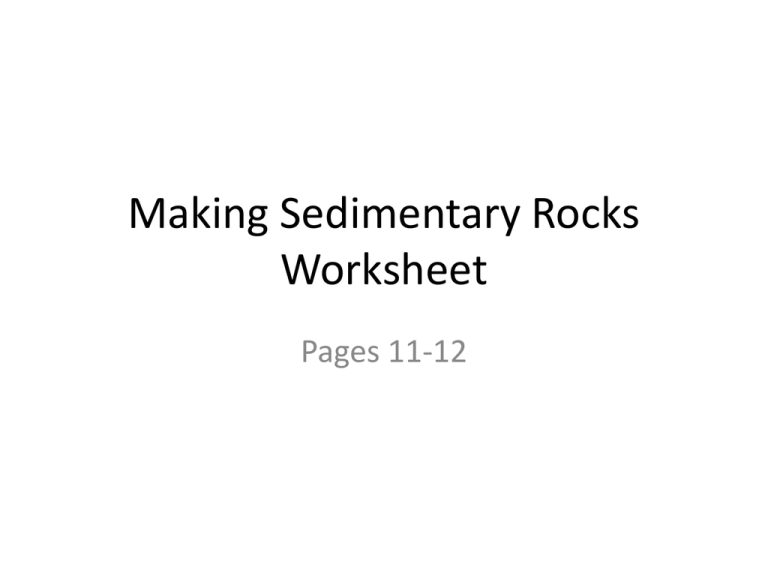
Making Sedimentary Rocks Worksheet Pages 11-12 Procedure • Follow the directions • Place materials in order • Color and label each layer/ Fossil *** Each group had a different procedure. 8 7 6 5 4 3 2 1 How do the layer thicknesses in your container relate to sedimentary rock layers in real life? • They vary in thickness – Some layers are very thin and some are thicker Why are the layers different thicknesses in real life? • Erosion / weathering happen at different rates each year – More erosion = larger layer • Events like volcano eruptions/dust storms don’t happen every year – Can create larger layers How do the layer colors in your container relate to sedimentary rock colors in real life? • Colors in real life are more earth tone – Brown, Beige, Tan, etc • In real life the colors still vary Why are the layers different colors in real life? • Different types of rocks are eroded and deposited • If an event occurs it would produce a different color than normal What challenges did you have with this lab? What challenges do you think you might have when you have to take each individual layer apart to create the fossil record? Sedimentary Rock Worksheet Page 14 Picture 1 • Which shell is the oldest? –C • There are no shells in Layer 3, why might this be? – Nothing to preserve them – Migrated • No dinosaur bone is found below Layer 2, this might mean: – They weren’t around that long ago / haven’t evolved yet – Conditions weren’t right to preserve them – They lived in a different area Picture 2 • If you also found a softdrink can in layer 3, what could you say about Layers 3,4, & 5 – Humans were around • Are there likely to be dinosaur bones in any of these layers? Explain. – Wrong picture (see below) – No. Humans didn’t coexist with dinosaurs Picture 3 • List the layers in order from oldest to youngest – E/B – D -- A/C • In diagram I, which layer is the same as Layer A? –C • What can you say about the top layer in diagram I? – Formed after the fault happened – Humans were around Relative vs. Absolute Time Page 15 - 16 Example Time Scale Relative Time Scale Absolute Time Scale I was born. I was born. August 21, 1985 I took my first steps. My little sister was born First high school RBI Graduated high school I took my first steps My little sister was born First high school RBI Graduated high school Graduated college Graduated college May 31, 2008 Got my first job Got my first job August 26, 2009 Today Today November 30, 2013 July 15, 1986 May 30, 1988 March 21, 2001 May 28, 2004 What events did you use in your scale? Describe how we determine relative time • Look at the rock layers to see what is before and after • Create a basic timeline/scale Describe how we determine absolute time • Radioactive decay information • Determine the number of elements / atoms in the sample and compare it to what we expect the element to do Why are both relative time and absolute time used to reconstruct past timescales? • Relative Dating – Pro • Works for long time periods – Con • Folding/ Faulting / Layers change • Absolute Dating – Pro • Very accurate/ Precise – Con • Only works up until a certain time period Radioactive Half-Life Pages 17-19 Data Generation Pennies 0 100 1 52.36364 2 26.09091 3 12.5 4 6.090909 5 3.318182 Graph What did the pennies represent? • Parent Element What did each trial represent? • Half-Life What pattern do you notice? • Numbers go down by approximately half every time Generation Pennies 0 100 1 52.36364 2 26.09091 3 12.5 4 6.090909 5 3.318182 How does your data compare to the class data? Generation Pennies 0 100 1 52.36364 2 26.09091 3 12.5 4 6.090909 5 3.318182 Compare your graph with the “HalfLife of Carbon-14” graph on the right. What similarities do you see? • Same basic shape • Line has a downward slope How can knowing an elements half-life help you determine the age of a fossil? • We can compare the amount of an element in a fossil to the graph of expected change • This gives us an approximate age based on half life Why do you think we replaced the heads up pennies with paperclips? Why was there always 100? • Matter isn’t created or destroyed – Atoms were changed but weren’t destroyed
